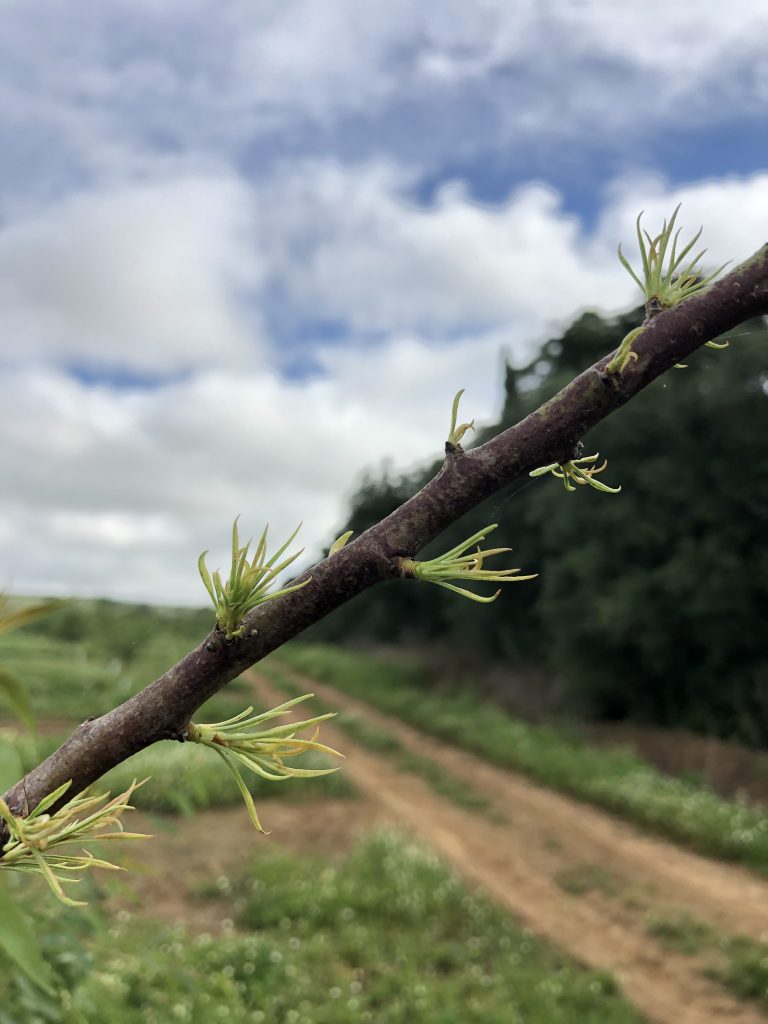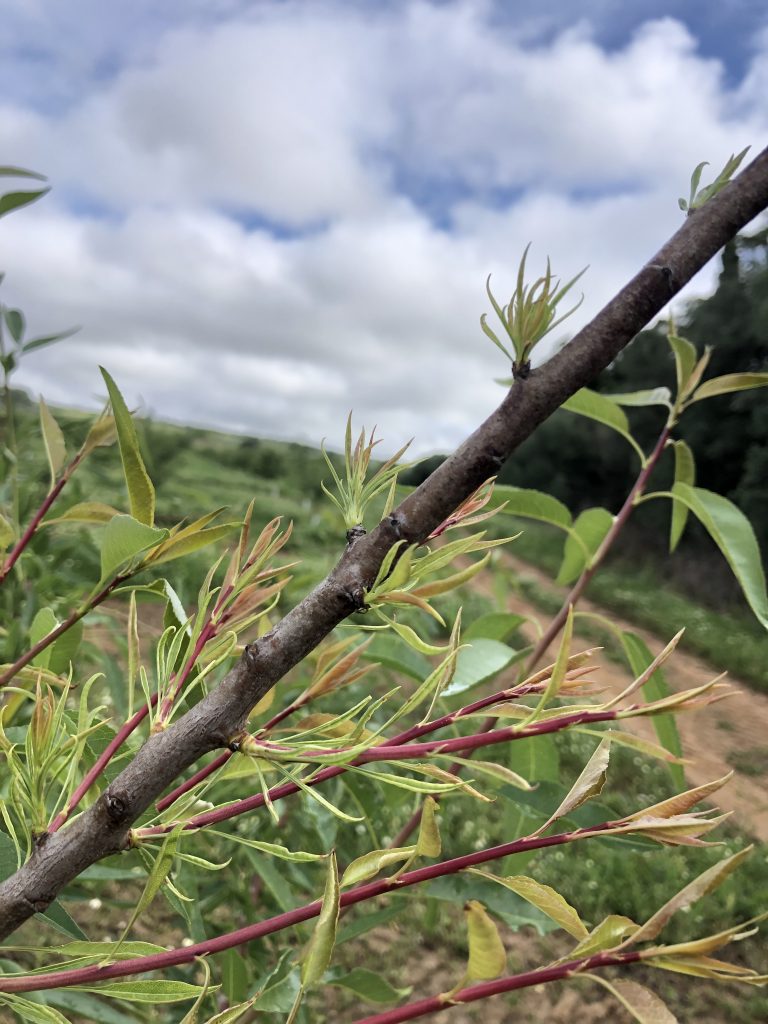Glyphosate is a very effective herbicide due to the stability of the chemical once it enters the plant. Off-target drift of this herbicide onto almond, however, can cause reduced, stunted growth, and if in high enough concentrations, tree death.

Drift symptoms are usually very obvious and appear similar to severe zinc deficiency. In some cases, the only way to determine the possible cause is to make a foliar application of zinc – if the symptoms are alleviated, it was a deficiency. If not, the damage was from glyphosate. After the appearance of the symptoms, it could take 2-3 months for the tree to begin to grow normally.
Applying glyphosate at any time of the year can injure the tree, including dormancy. Therefore, care must be taken to reduce drift and the subsequent effects by using properly calibrated spray equipment, drift reducing surfactants, and reduced winds at the timing of application. The pictures below show the effects of dormant applied glyphosate drift onto almond 2 months after the application. The second photo shows the recovery of the limb and was made 10 weeks after the herbicide application.

Once drift damage occurs, there is nothing that can be done besides to wait for recovery. Applying foliar nutrients does not expedite recovery. This has been demonstrated in multiple field demonstrations and trials. Prevention is the best cure.

